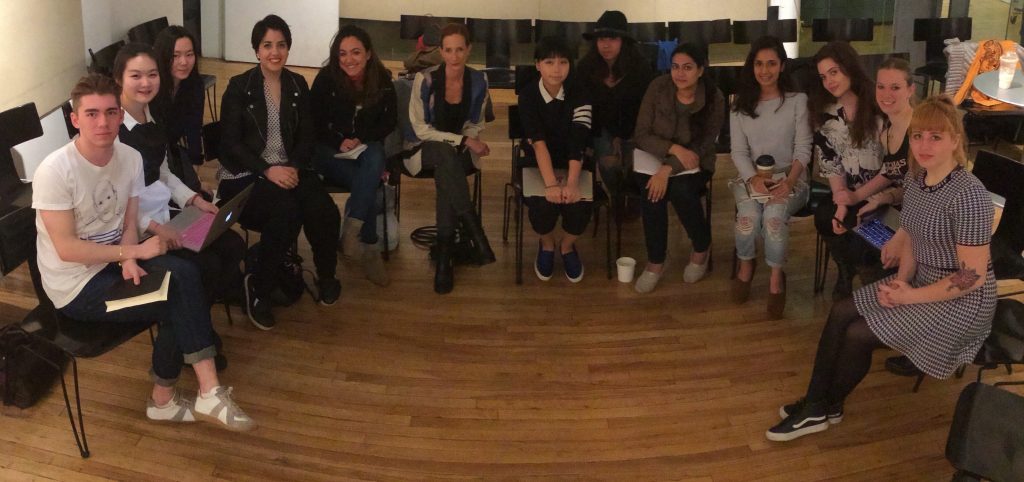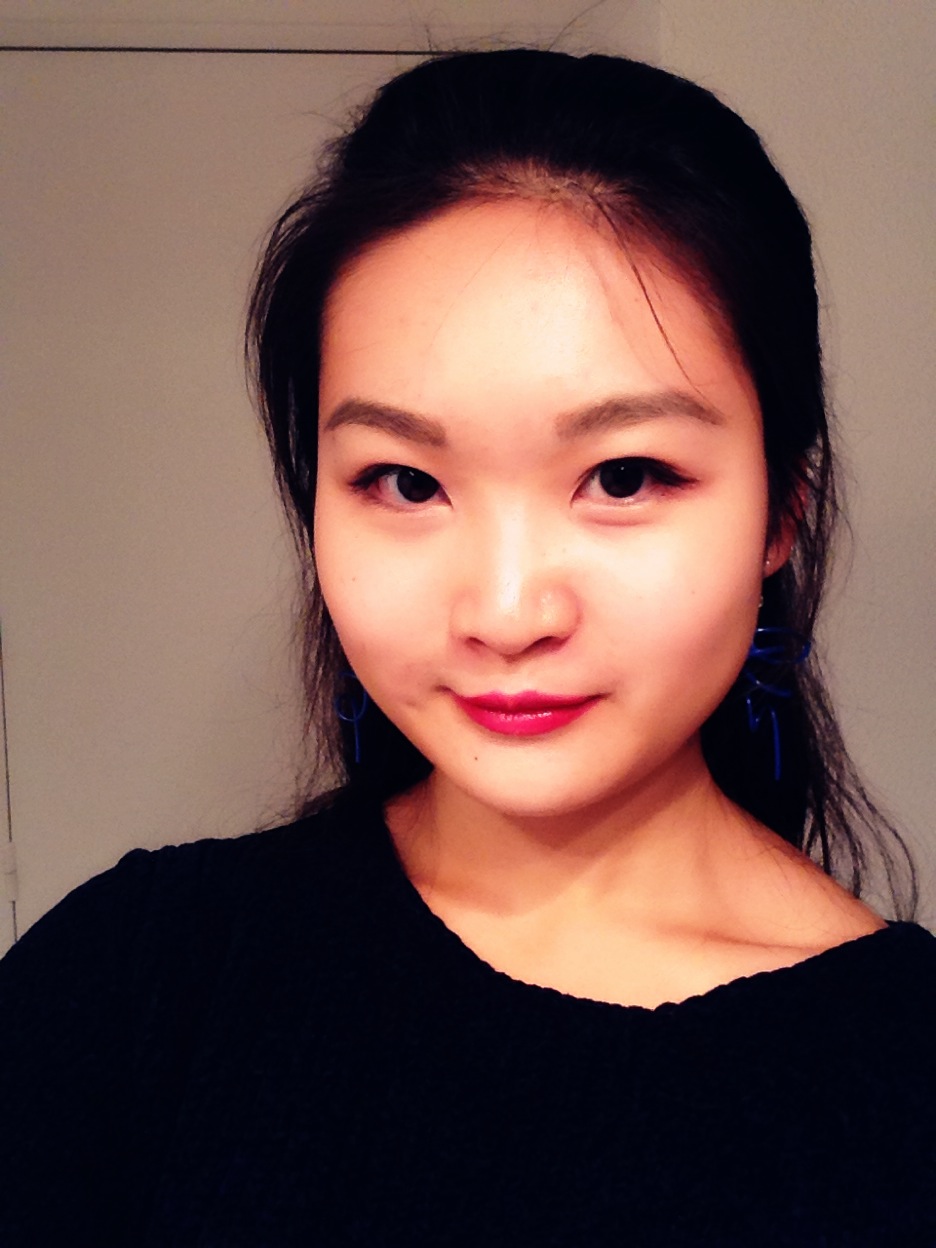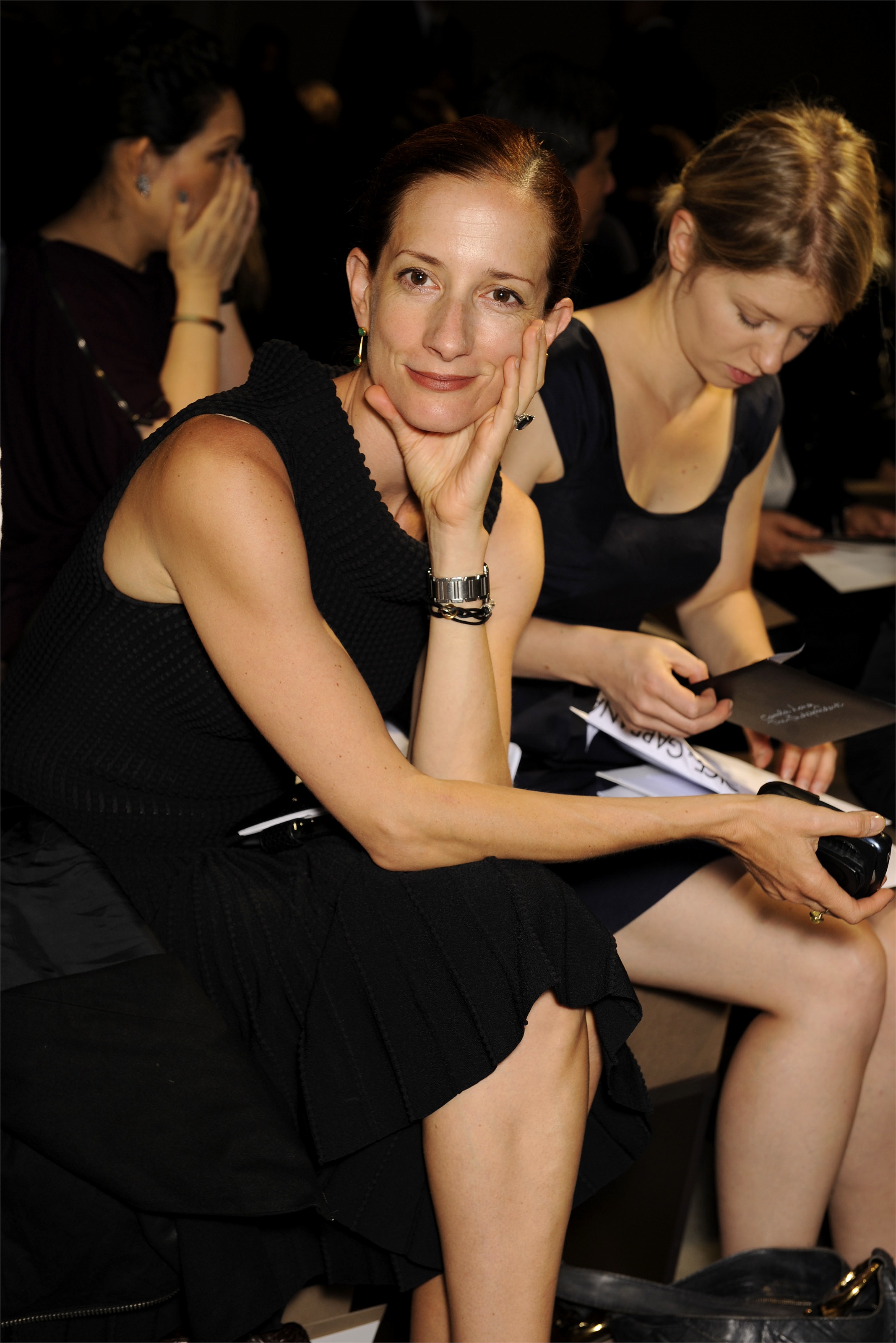Vanessa Friedman Joins Fashion Publishing as Its Latest Guest Speaker
Written by Zijun Shi
“If you’re not willing to say when something is bad, when you say that something is good, it doesn’t matter–that’s the bottom line,” said Vanessa Friedman, The Chief Fashion Critic and Fashion Director of The New York Times, the latest guest speaker in Rebecca Suhrawardi’s Fashion Publishing last Tuesday.
Vanessa’s elegance cuts a line when she enters the classroom—her reddish hair was combed back in her signature bun that was tied tightly at the nape of her neck. Her slim figure was outfitted in a uniquely patterned blazer, matched with light grey jeans and a pair of Jimmy Choo moto-inspired boots.
The talk was formatted as a roundtable question and answer session with the students steering the conversation with their inquiries. What made you go to The New York Times?” asks one student. She replies with a hearty laugh, “I’m American, I’m from New York—it’s the Times!” The class laughed along with her. She then continues to explain, “It’s a much bigger platform for a writer or a voice, and it is read in a way that no other newspaper in the world is read, so that’s a hard opportunity to turn down.”
A graduate of Princeton University with a degree in History, Vanessa wrote for high profile magazines such as VOGUE and ELLE working on features—mostly culture—and so was around fashion magazine publishing for a long time. “I was much more interested in being an analyst, and observer, and a watchdog,” she said of her choice to transition to the newspaper world.
In 2003, the FT’s decision to give more coverage to fashion coincided with the explosion of the fashion industry—there were more and more billion-dollar fashion brands. “This is just not a reader service but it is also actually a financial story and an industry,” she said of the FT’s choice to expand fashion coverage. For the next 10+ years, she helped craft the FT’s perspective on fashion through her voice, writing, and coverage and critique.
She tries to tie into her stories to what is happening in bigger the world picture, “So I can reach a broader Times reader,” she says, and mentions a piece she’s working on about Cuba—specifically inspired by the meeting of President Obama and Fidel Castro. “What does this country represent in the fashion imagination and why is it so often referenced?” she questions. “Many more times than you would think for a small island.”

New York Times Chief Fashion Critic and Fashion Director, Vanessa Friedman, with the students of Fashion Publishing
Another student asks, “What do you suggest to study should we want to go into this field?” “Everything!” She exclaims. “I think it’s important with fashion to know where things came from, what happened before. I think being open and aware of what’s going on in the rest of the world, in other industries, and how fashion connects to those worlds and is influenced by them is particularly important, for students like you, because you’re competition for whatever jobs you’re looking for will not just be fashion people. They will be people from all sorts of other industries. And that’s the result of this overlap between fashion and every other cultural and professional sphere. The upside is that you can take what you learned about fashion to other areas, so you shouldn’t feel limited by this. It becomes an industry with tentacles with influence in music, film theater, consumer goods, hotels and it creates opportunities.”
As a student, and as a Strategic Design and Management Design major with an enthusiasm for fashion, there is always doubt if the more business tendencies of this education would really lead to a career. Her talk gave some assurance that fashion is a rather dynamic topic which requires diverse sources of knowledge to nourish its growth.
“Criticism allows you to use language in a way that just journalism doesn’t,” she explains and then encourages students to pursue that path should it interest them. “I think it has value, I don’t think it’s going away.”
________________________
About the author
 Zijun Shi is a current BBA Strategic Design and Management Student from China. She is an art lover whose passion lays in creativity. She is trying to blend her knowledge on business management into her love for art.
Zijun Shi is a current BBA Strategic Design and Management Student from China. She is an art lover whose passion lays in creativity. She is trying to blend her knowledge on business management into her love for art.
The enthusiasm of sharing information on amazing activities with people is what encourages her all the time.
Recent Posts
 School of Fashion Newsletter
School of Fashion Newsletter
- SOF Newsletter- April 2021 April 5, 2021
- SOF Newsletter- March 2021 March 3, 2021
- SOF Newsletter- February 2021 February 8, 2021
- SOF Newsletter- December 2020 December 1, 2020
- SOF Newsletter- November 2020 November 2, 2020
- SOF Newsletter- October 2020 October 6, 2020
- 4/1: Fashion News, Events, Opportunities, & More April 1, 2020
- 3/4: Fashion News, Events, Opportunities, & More March 4, 2020
- 2/26: Fashion News, Events, Opportunities, & More February 26, 2020
- 2/19: Fashion News, Events, Opportunities, & More February 19, 2020
